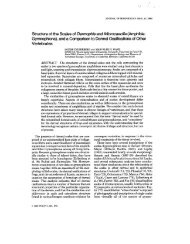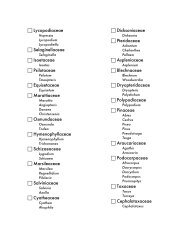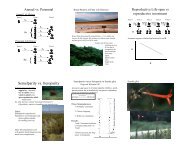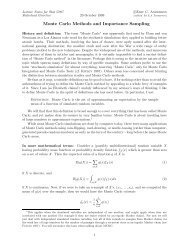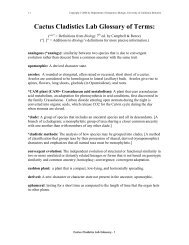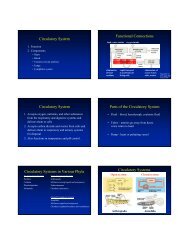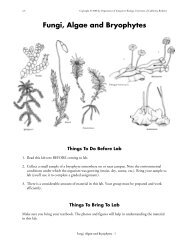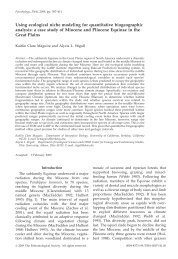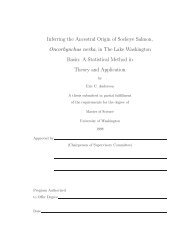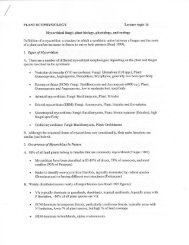Introduction to Cladistic Analysis - Integrative Biology - University of ...
Introduction to Cladistic Analysis - Integrative Biology - University of ...
Introduction to Cladistic Analysis - Integrative Biology - University of ...
You also want an ePaper? Increase the reach of your titles
YUMPU automatically turns print PDFs into web optimized ePapers that Google loves.
no<strong>to</strong>chord<br />
Copyright © 2009 by Department <strong>of</strong> <strong>Integrative</strong> <strong>Biology</strong>, <strong>University</strong> <strong>of</strong> California-Berkeley<br />
On the upper part <strong>of</strong> a piece <strong>of</strong> paper,<br />
identify taxa subsets. Starting with the most inclusive group(s),<br />
place the taxa in<strong>to</strong> nested boxes.<br />
Note the characters that support each grouping.<br />
vertebrae; skull<br />
jaws<br />
tunicate lamprey Cladoselache trout lungfish frog<br />
<strong>Introduction</strong> <strong>to</strong> <strong>Cladistic</strong> <strong>Analysis</strong> - 14<br />
swimbladder or lung<br />
enamel<br />
4-limbs<br />
Figure H. Taxa subsets in nested boxes<br />
Next, draw a cladogram below the boxes <strong>to</strong> reflect the nested relationships.<br />
tunicate lamprey Cladoselache trout lungfish frog<br />
Figure I. Cladogram implied by nested subsets <strong>of</strong> taxa



